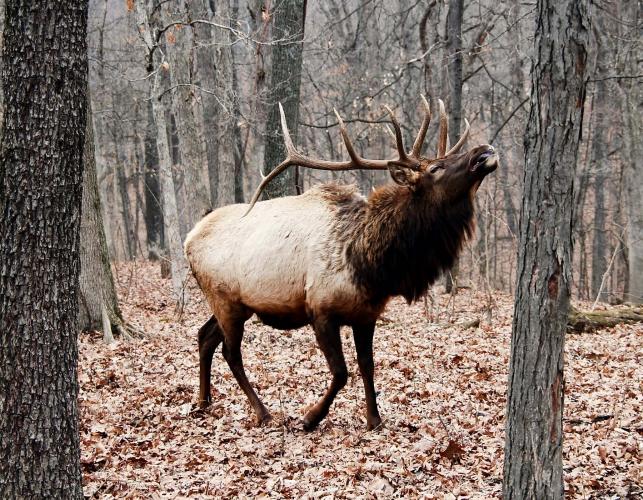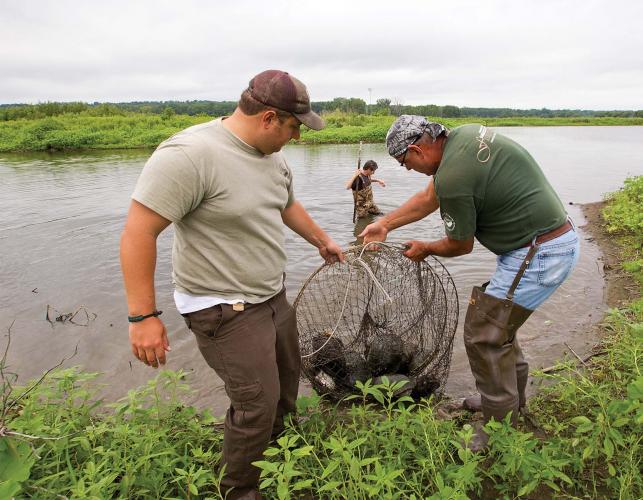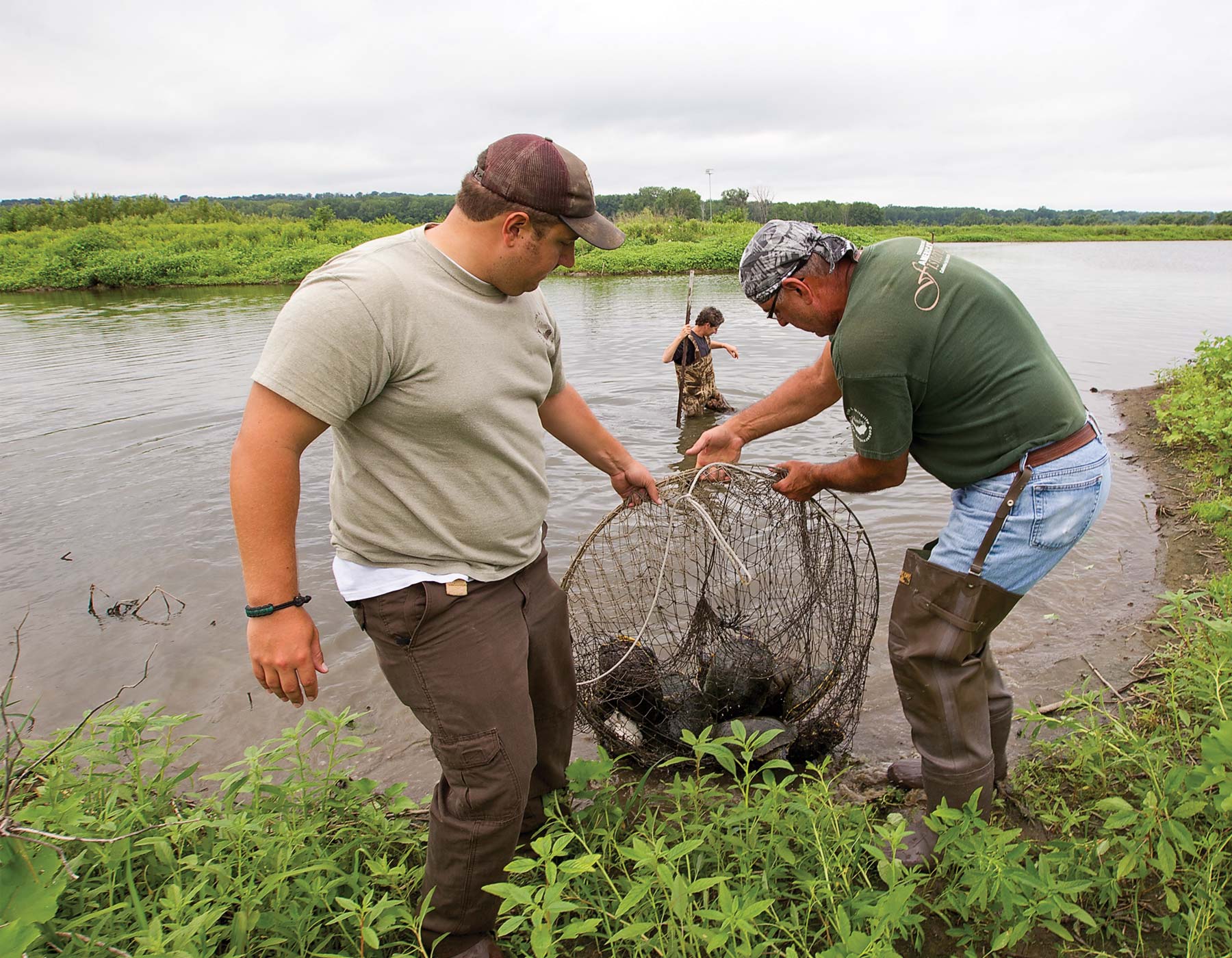
Xplor reconnects kids to nature and helps them find adventure in their own backyard. Free to residents of Missouri.




JEFFERSON CITY Mo – The Missouri Department of Conservation (MDC) recently held open-house-style public meetings in southern Missouri to share information about proposed plans for elk restoration in the region and to gather comments from the public.
About 300 people attended the meetings, which were held in Van Buren on Aug. 23, Eminence on Aug. 24 and Ellington on Aug. 26.
MDC staff visited with members of the public at information tables that focused on various aspects of the proposed elk restoration. Topics discussed included animal health testing, the restoration zone, herd and habitat management and possible economic benefits from elk hunting and related tourism.
While the Conservation Commission has yet to approve the proposed restoration plan, the draft calls for extensive testing of all imported elk for various diseases. Following this, the proposed plan calls for a limited release of 80 to 150 cow and bull elk in early 2011 into a 365-square-mile restoration zone around the Peck Ranch Conservation Area in Shannon, Carter and Reynolds counties. According to MDC research, this area has suitable habitat, consists mostly of public lands, has limited roads running through it and has limited agriculture activity.
The MDC completed a feasibility study and held public meetings on potential elk restoration in 2000. The Conservation Commission suspended plans at that time due to the emerging issue of chronic wasting disease (CWD) and habitat concerns.
“Missourians are tied to the land and the wildlife,” said MDC Deputy Director Tom Draper. “We have an opportunity here to restore a native species that can coexist with other wildlife and land uses. There may be some issues, but we can work together to fix those. MDC wants to be a good neighbor.”
ANIMAL HEALTH TESTING
To prevent possible disease transmission from imported elk to domestic livestock and other wildlife, the MDC is working with the Missouri Department of Agriculture and State Veterinarian Dr. Taylor Woods.
“Our two agencies have developed extensive animal-health testing protocols for imported free-ranging elk that have been proven in other states and meet or exceed required health testing protocols for wildlife or livestock,” said Dr. Woods.
If the Conservation Commission decides to proceed with plans to restore elk, the protocols call for all imported elk to be tested for nine diseases: brucellosis, CWD, bovine tuberculosis, anaplasmosis, bovine viral diarrhea, blue tongue, epizootic hemorrhagic disease, Johne’s disease and vesicular stomatitis. All elk must originate from a CWD-free state and test negative for CWD, along with brucellosis and bovine tuberculosis.
The protocols also state that all imported elk would be tested in their state of origin as well as in Missouri before release. Elk would also be treated for internal and external parasites in their state of origin before being brought into Missouri. Any elk brought into Missouri would be held in a fenced area in the restoration zone prior to release.
The protocols also call for the MDC to collect health data from the state of origin several months prior to trapping elk for transportation to Missouri. Each shipment of elk into Missouri would be followed by a Certificate of Veterinary Inspection and approved by an accredited veterinarian. All imported elk that die in Missouri would be examined for cause of death.
All elk would be fitted with microchips and radio collars to help monitor their health, movements and location.
MOTOR VEHICLE COLLISIONS
MDC Biologist Lonnie Hansen said that elk-vehicle collisions do occur in states where elk have been restored, but such accidents have been infrequent.
Hansen is one of several MDC biologists developing the current proposed restoration plan and was instrumental in developing the 2000 feasibility study.
“Arkansas has approximately 500 elk in an area covering about 500 square miles and averages one or two elk-vehicle accident per year,” said Hansen. “Kentucky has approximately 10,000 elk in an area covering about 6,400 square miles throughout 16 counties and averages about 10-elk-vehicle accidents per year.”
He added that the 365-square-mile zone around Peck Ranch Conservation Area contains 77 miles of blacktop highway inside the restoration zone.
“This area has fewer roads per square mile than elk areas in other states,” he explained. “For example, Arkansas’ elk areas have about 2.1 miles of roads per square mile compared to 1.2 miles of roads per square mile in Missouri’s proposed restoration zone.”
Hansen said differences between elk and deer behavior during the rut make elk less prone to vehicle collisions.
“Elk do not frequent and cross roads to the same extent as deer,” he explained. “Elk are harem breeders where they win and defend a group of cows in an established area. They do not go through the chase phase of courtship like whitetails, which causes bucks and does to cross roadways.”
LANDOWNER CONCERNS
Hansen added that the MDC plan also deals with elk that wander where they are not welcome, and is modeled after those of other states where elk have been introduced.
“Elk may move from areas where we want them onto private land where they are not wanted,” said Hansen. “We are talking with private landowners in and around the restoration zone and listening to their concerns. The key to help prevent problems is to provide excellent elk habitat and keep them on public property as much as possible.”
The MDC plan includes having trained staff who would quickly respond to complaints about unwelcome elk. Tactics for dealing with unwelcome elk could include harassing them with shell crackers and other noise-making methods to prompt them to leave private land and not return. Staff could also sedate and relocate nuisance elk. As a last resort, staff could harvest nuisance elk and donate the meat to food pantries.
Hansen noted that Arkansas has recorded about two complaints of pasture damage and one or two complaints of fence damage per year over the past 20 years.
The MDC is also developing cost-share incentives for private landowners in the area to help them manage pastures for both improved livestock grazing and elk habitat. Potential funding support may come from the Rocky Mountain Elk Foundation and/or the Missouri Conservation Heritage Foundation.
HUNTING AND ECONOMIC BENEFITS
The MDC’s elk restoration plan will include herd-management guidelines, with hunting in the future as the primary management tool to maintain an appropriate population.
“Our goal is to grow and maintain a herd that doesn’t exceed the supporting habitat,” said Draper.
He added that elk restoration in other states has provided economic benefits.
“States that have restored elk, such as Pennsylvania, Kentucky, and Arkansas, learned that elk quickly became a key tourist attraction,” Draper explained. “Establishing an elk herd in this limited area in southern Missouri would likely result in considerable public interest and a subsequent boost to tourism and hunting.”
Governor Jay Nixon released a statement earlier this summer supporting the MDC’s exploration of possible elk restoration.
According to the governor’s statement, “Restoring our state’s native elk population could have important conservation and economic benefits… The benefits for elk restoration for tourism and hunting in Missouri could be significant…”
The Conservation Federation of Missouri (CFM), the state’s largest and oldest conservation-related organization, also supports the MDC’s elk restoration efforts.
In a letter to the MDC, CFM Executive Director Dave Murphy wrote, “…The concept that a significant part of our natural heritage can be restored is worthy of consideration… Several developments like a new live-animal [elk] test for CWD and like restorations of wild elk in a number of our neighboring states to significant cultural and economic benefits without real consequences combine to suggest that another look may be worthwhile… As an organization now with just over 90,000 members in Missouri, we see real enthusiasm and excitement for the restoration of elk…”
The L-A-D Foundation, owner of Pioneer Forest, also supports the MDC’s elk restoration efforts. Pioneer Forest covers 27% of the land in the restoration zone.
According a letter to the MDC from L-A-D Foundation President John Karel, “We are advised that the reintroduction of elk into Missouri on a limited basis is once again under consideration by your Department. We are pleased to advise that the L-A-D Foundation endorses such consideration, and hopes that it will prove feasible to restore wild elk to a place in the Missouri outdoors.”
The majority of written comments received at the public meetings were in favor of the MDC’s elk restoration efforts.
In addition to written comments received at the public meetings, the MDC is seeking comments through its website at www.mdc.mo.gov/contact-us under “Elk Restoration Comments” or mailed to Missouri Department of Conservation, Director’s Office, PO Box 180, Jefferson City MO 65102-0180.
MDC staff will include results of public comments in a presentation of the proposed elk-restoration plan to the Conservation Commission at its October 15 meeting in Kirksville.
Additional information on the MDC’s proposed elk restoration efforts is available at www.missouriconservation.org by searching “elk restoration.”